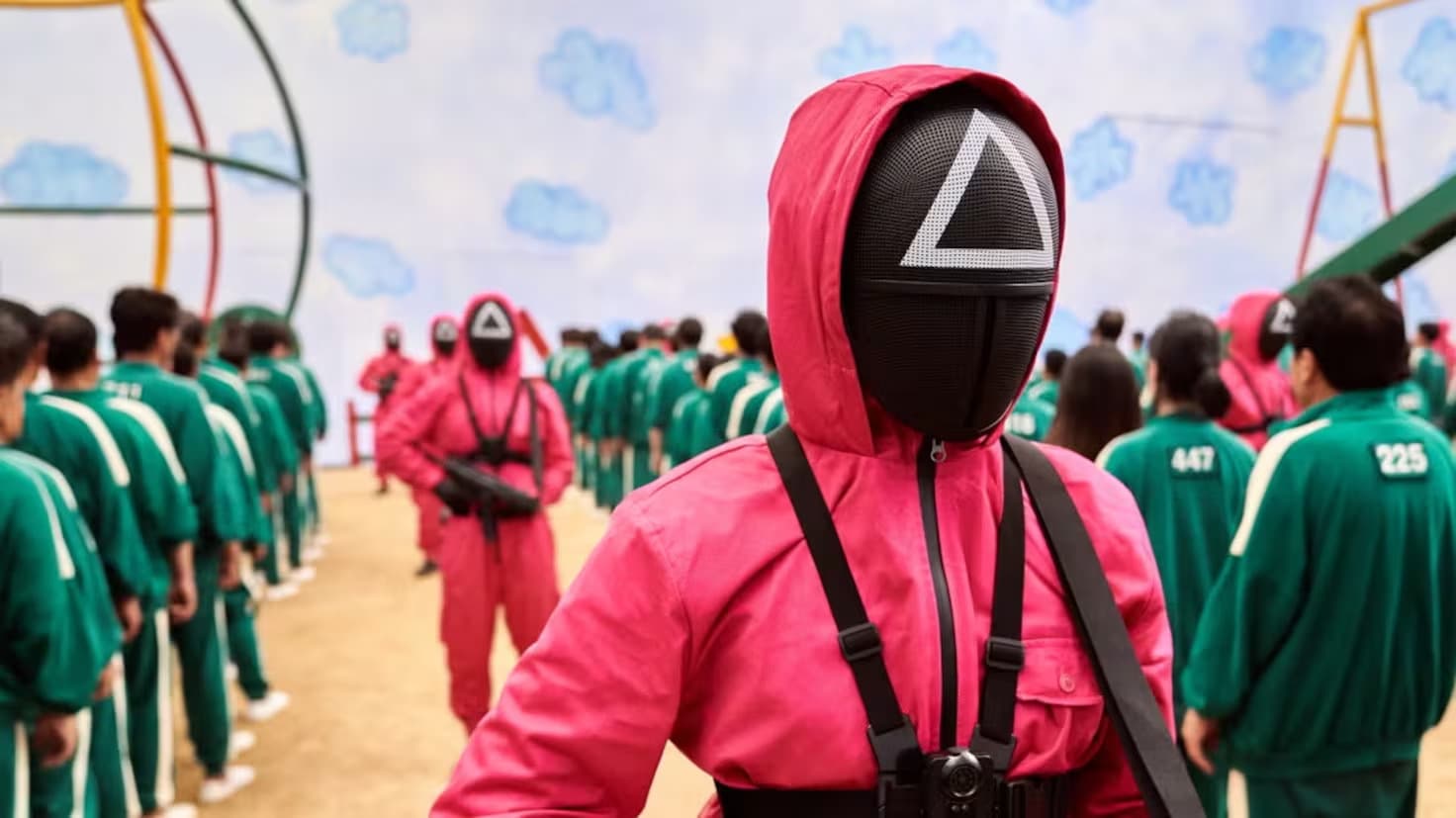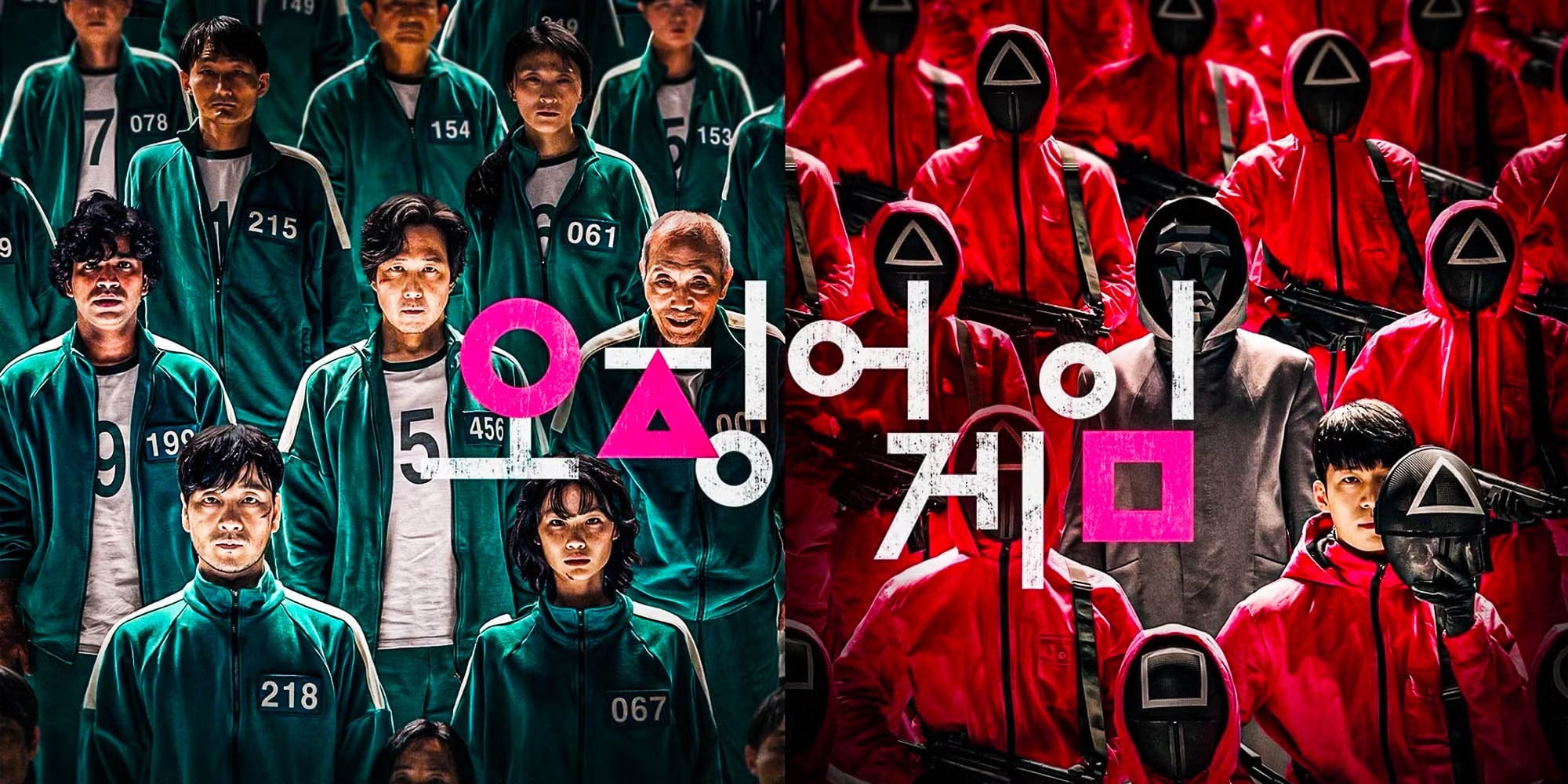Symbolism of Colors in Squid Game: Meaning Behind Red, Green & More
Discover the symbolism of colors in Squid Game and uncover the deeper meaning behind red, green, and other hues. Explore how color codes reveal hierarchy, power dynamics, and cultural significance in this in-depth analysis.

Color symbolism in TV shows plays a crucial role in conveying deeper meanings and enhancing the narrative. In Squid Game, a Netflix sensation that captivated audiences worldwide, color is not merely an aesthetic choice; it serves as a powerful tool to depict hierarchy, power dynamics, and emotional undertones. The strategic use of colors, particularly red and green, not only establishes the show’s visual identity but also enriches its themes of survival, control, and vulnerability. This essay delves into the symbolism of colors in Squid Game, examining how they reflect the show’s underlying messages and cultural significance.
How Squid Game Uses Color Codes to Show Hierarchy
In Squid Game, color codes are employed to delineate the hierarchy among characters. The stark contrast between the players and the guards is immediately apparent through their costumes. The guards, clad in striking red uniforms, symbolize authority, control, and danger. This color choice is significant as red is often associated with power and aggression, evoking feelings of fear and submission among the players. In contrast, the players wear green tracksuits, a color traditionally linked to hope and unity. However, in the context of the game, this color also signifies their vulnerability and desperation.
The visual aesthetics of the show effectively communicate the power dynamics at play. The guards, with their masks obscuring their identities, represent an anonymous force of control, while the players, stripped of their individuality and dignity, are reduced to mere pawns in a deadly game. This color-coded hierarchy not only enhances the narrative but also immerses viewers in the psychological tension that permeates the series.
The Purpose of Green Tracksuits in Squid Game
The green tracksuits worn by the players serve multiple purposes within the narrative. Firstly, they create a sense of uniformity among the participants, stripping them of their personal identities and reducing them to mere numbers in the game. This dehumanization is a critical theme throughout the series, as the players are forced to confront their mortality and the lengths they are willing to go to for survival.
Moreover, the choice of green is emblematic of hope and renewal. Despite their dire circumstances, the players cling to the hope of winning the game and escaping their financial woes. The color green, often associated with life and growth, juxtaposes the grim reality of the game, where each player is pitted against one another in a fight for survival. This duality evokes a sense of empathy in viewers, as they witness the characters’ struggles and aspirations.
Why Are Squid Game Guards Red and Players Green?
The contrasting colors of red and green in Squid Game serve as a visual representation of opposing forces: authority versus vulnerability. The guards, dressed in red, embody the oppressive system that governs the game, while the players, in green, symbolize the hope and desperation of those trapped in a cycle of poverty. This color dichotomy is not merely aesthetic; it reflects the broader themes of power and control that permeate the series.
Red, as a color, evokes strong emotions such as danger, aggression, and dominance. The guards’ red uniforms create an atmosphere of fear, reinforcing their role as enforcers of the game’s brutal rules. The players, on the other hand, are dressed in green, a color that evokes feelings of safety and community. However, within the context of the game, this sense of safety is an illusion, as the players are ultimately pitted against one another in a ruthless competition for survival.
Meaning of Black and Gold in Squid Game
In addition to red and green, the colors black and gold also carry significant meaning in Squid Game. The VIPs, dressed in luxurious black and gold attire, symbolize wealth, power, and moral corruption. Their opulent appearance starkly contrasts with the grim reality faced by the players, highlighting the disparities between the privileged elite and the desperate participants of the game.
The use of black and gold serves to emphasize the themes of greed and exploitation that permeate the series. As the players grapple with their own desires and moral dilemmas, the VIPs represent the darker side of human nature, where wealth and power come at the expense of others. This additional layer of color symbolism enriches the narrative, inviting viewers to reflect on the broader societal implications of the characters’ choices.
Cultural Significance of Colors in Korean Dramas
The cultural significance of colors in Korean dramas adds another layer of depth to the symbolism in Squid Game. In Korean culture, red is often associated with power, wealth, and celebration, while green is linked to life and growth. This cultural context enhances the show’s themes, as the use of these colors reflects the characters’ struggles against societal pressures and expectations.
Furthermore, the interplay of these colors within the context of the game serves to amplify the emotional stakes for the characters. As they grapple with their desires and fears, the colors become a visual representation of their internal conflicts, reinforcing the show’s exploration of morality and survival.
Themes of Power and Control
The themes of power and control are central to Squid Game, and the use of color symbolism plays a crucial role in conveying these ideas. The guards’ red uniforms signify authority and dominance, while the players’ green tracksuits represent submission and vulnerability. This visual representation of hierarchy underscores the brutal nature of the game, where the players are pitted against one another in a fight for survival.
The stark contrast between the two colors serves to highlight the moral complexities of the characters’ choices. As they navigate the treacherous landscape of the game, the players are forced to confront their own values and the lengths they are willing to go to for survival. This exploration of power dynamics adds depth to the narrative, inviting viewers to reflect on the ethical implications of the characters’ actions.
How Colors Convey Emotions in Squid Game

The emotional impact of colors in Squid Game is profound, as they evoke specific feelings and responses in viewers. Red, with its associations of danger and aggression, creates a sense of tension and urgency, heightening the stakes of the game. As players confront life-or-death situations, the red of the guards serves as a constant reminder of the consequences of failure.
In contrast, green evokes feelings of hope and familiarity, providing a brief respite from the chaos of the game. This emotional duality resonates with viewers, as they witness the characters’ struggles and aspirations. The interplay of these colors not only enhances the visual storytelling but also deepens the emotional engagement of the audience, inviting them to reflect on the complexities of survival and morality.
Conclusion
The symbolism of colors in Squid Game is a powerful tool that enhances the narrative and deepens the emotional engagement of viewers. Through the strategic use of red and green, the show effectively conveys themes of hierarchy, power dynamics, and the human struggle for survival. The cultural significance of colors in Korean traditions further enriches the narrative, inviting audiences to reflect on the moral complexities of the characters’ choices.
This masterful use of color symbolism demonstrates how colors can shape our emotional responses and understanding of visual narratives. Whether in television, art, or interactive media, the power of color to convey meaning remains universal. Understanding these color relationships and their psychological impact is crucial for anyone interested in visual design or color theory.
Ready to explore the fascinating world of color theory yourself? Challenge your color perception skills with Colorfle’s daily color mixing puzzles. Each puzzle offers a unique opportunity to understand color relationships and improve your intuition for color mixing, turning abstract color theory into practical knowledge through engaging gameplay.